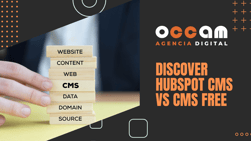Index Content
Not all companies are suitable to apply the Inbound methodology in their processes. Since the birth of this marketing modality in 2005, something changed forever in its conception. The focus of brands would no longer be the product, but the consumer. After all, it is who we want to fall in love with. Inbound marketing works with brands that have an online presence. E-commerce is a privileged one.
have you tried techniques that don't work? Find out how Inbound Marketing can help your eCommerce and improve the visibility of your App with ASO.
Inbound techniques for eCommerce
If you are looking for strategies to increase the sales of your online shop, now is the time to experiment with Inbound Marketing. This methodology will help you increase the traffic to your website and the percentage of revenue conversions. And the best thing is that you can put it into practice today. Ready?
In this section we explain all the Inbound techniques you can use:
- Define your buyer persona. By drawing up a detailed profile of the potential customer your business is targeting, you will know their needs, concerns, objectives, challenges and demographic data. You will therefore be able to personalise your marketing actions to attract your target audience in a natural way.
- Content marketing: The creation and dissemination of content is vital to attract your target audience with valuable information. They will value its quality, generate traffic and sales. And it doesn't necessarily have to be written content, you can also take advantage of video marketing, infographics or other visual formats.
- Social Media: Brands are what they share on social networks. The more you use them, the more they will know you, but it is not enough to publish just anything. It is important to spread the content you publish on your blog on them, focusing on the needs of the reader, listener or viewer. Social networks are key in the Inbound Marketing matrix.
- Email Marketing: Reaching far in a short time is possible with email marketing, a technique with the ability to create value and personalise on a large scale. It is a powerful communication tool to achieve your business goals and make your audience buy or download your content.
All these tools will help your eCommerce to be more visible, but you have to get comfortable and take all the time you need to get to know your customers and plan the strategies you are going to employ.
For example: acquisition (blog, RRSS, SEO and SEM, video, eBooks, webinars) conversion (call to actions, landing pages, thank you pages, forms), sale (email, workflows, CRM, lead conversion) and loyalty (new call to actions, interesting content, cross selling, email).
think about it calmly!
does your eCommerce have an App? Position it with ASO
Since the birth of mobile applications has become a popular trend, techniques have been developed to position them in the market, such as ASO (App Store Optimisation). It is similar to SEO, but with the difference that in ASO mobile applications are positioned in virtual shops, such as Google Play Store or App Store.
You will hardly have visibility in these shops if you do not carry out an optimisation strategy to position your App in the search (keywords), Top Charts (rankings) and featured (featured). You will increase traffic and improve the conversion rate to generate the highest volume of installations.
ASO is a fundamental part of any App Marketing strategy, as it allows you to achieve free downloads and reduce acquisition costs in paid marketing campaigns, if you work correctly. This tool allows you to increase traffic (both organic and non-organic), conversion and engagement.
what is organic In-Store, Out-Store, non-organic In-Store and non-organic Out-Store traffic?
When we implement an App Marketing strategy with ASO, it is important to take into account In-Store organic traffic, which is the traffic that lands on the application's page through browsing in virtual shops, thanks to search results, featured in shops, related Apps or keywords.
On the other hand, Out-Store organic traffic is the traffic that accesses the mobile application listing from the Google mobile web search result. It is the same as Google mobile web search.
Non-organic In-Store traffic is traffic that lands on the App listing from a paid channel and its origin has been measured with analytical tools or attribution partners with a tracked link.
Finally, Out-Store non-organic traffic refers to traffic that accesses the tab from campaigns in own channels, such as social networks or mailing, or paid channels, such as Facebook Ads or Mobile Display, among others.
Inbound Marketing and ASO: the perfect combination to boost your visibility
ASO fits perfectly with Inbound Marketing strategies. They form the perfect combination to attract potential customers through valuable content, make them download the App, gain visibility and build their loyalty. This technique is not only search or optimisation of an App's tabs, but a set of multiple factors.
The effectiveness of an ASO campaign will be measured by the conversion rate (CVR), which indicates the percentage of users who visit an app's tab and download it. Generally, the main visual elements of these tabs are: the featured image, the video, the icon and the screenshot.
At Occam Digital Agency, we help you to implement Inbound strategies and ASO campaigns to make your eCommerce and application a place of reference among users. If you have any doubts, contact us.




